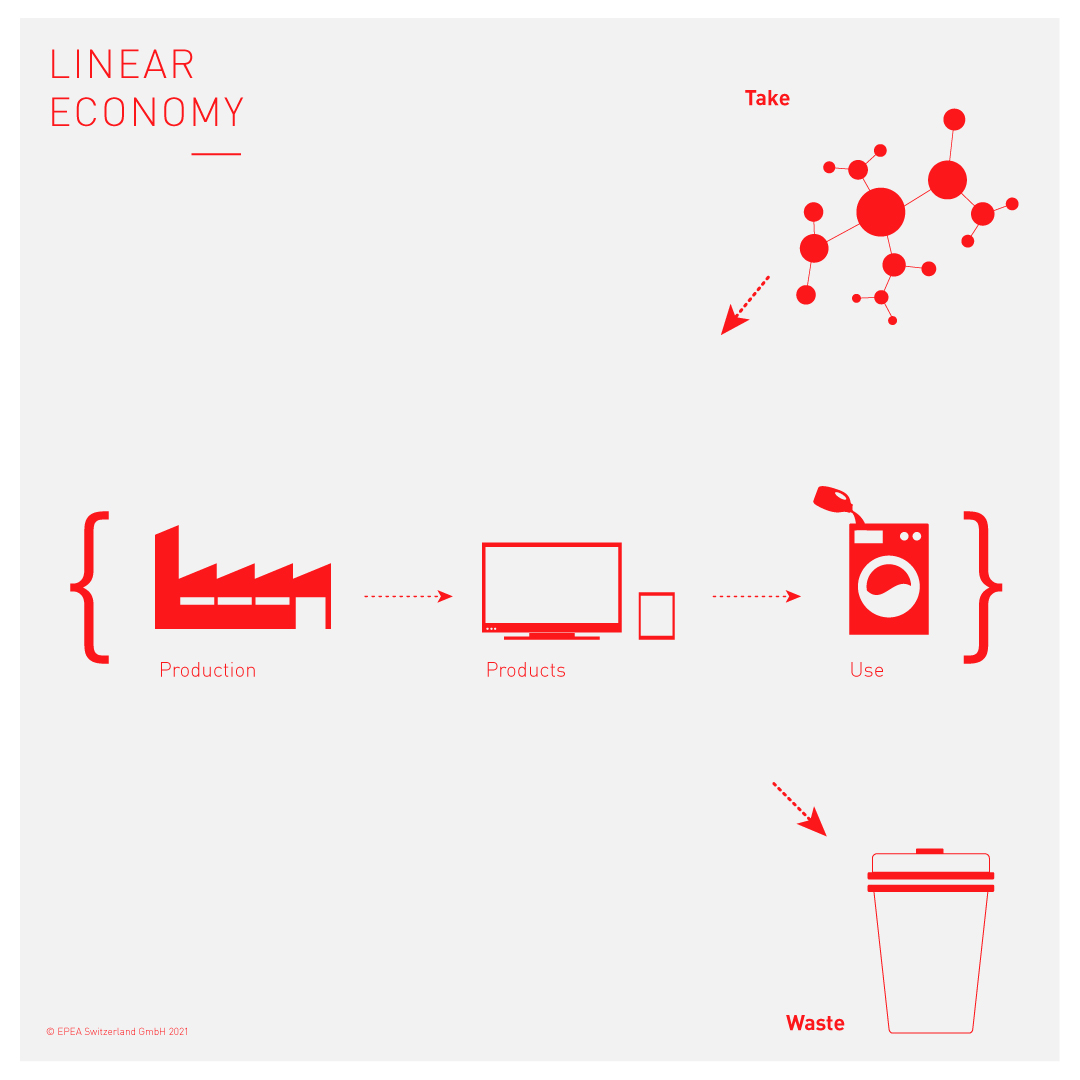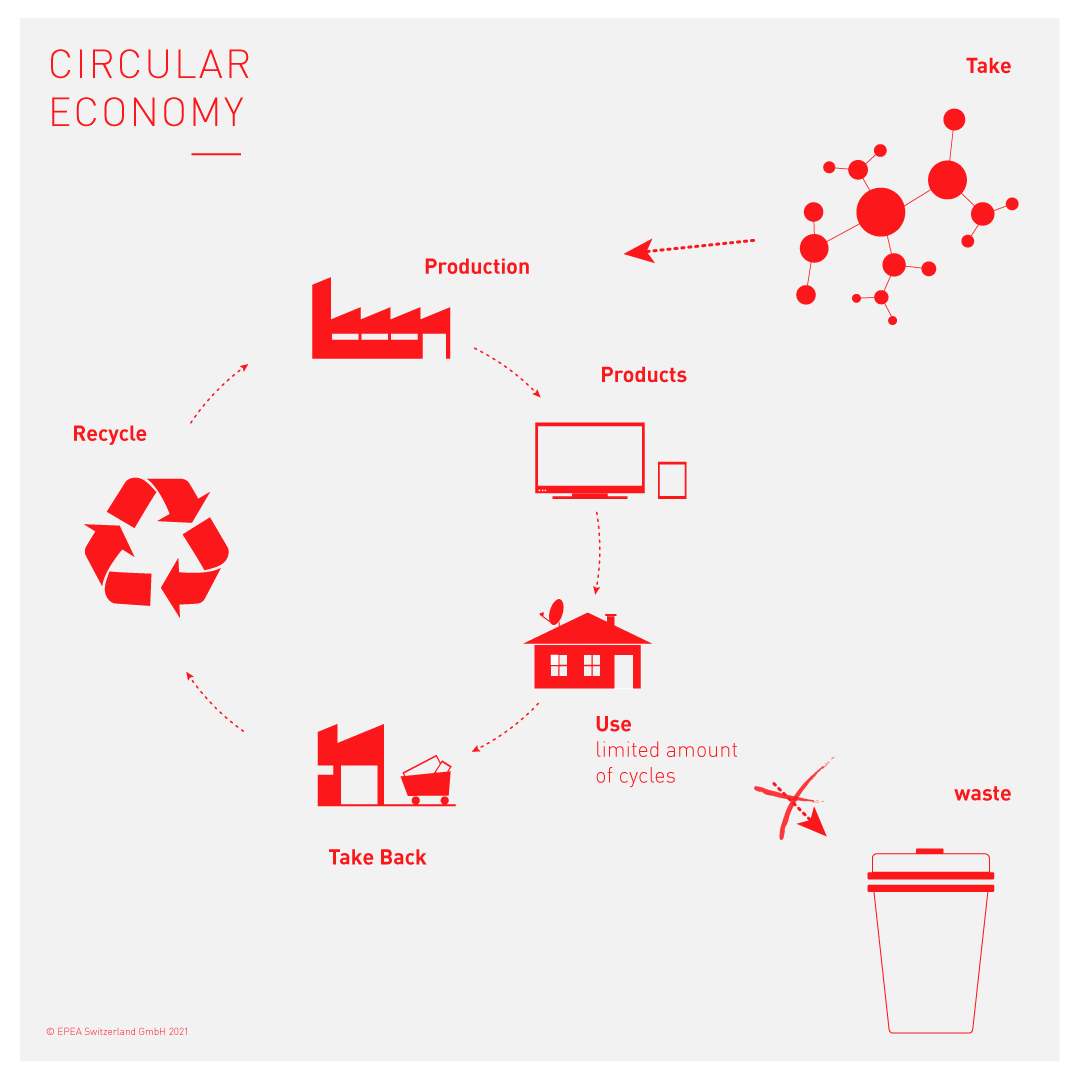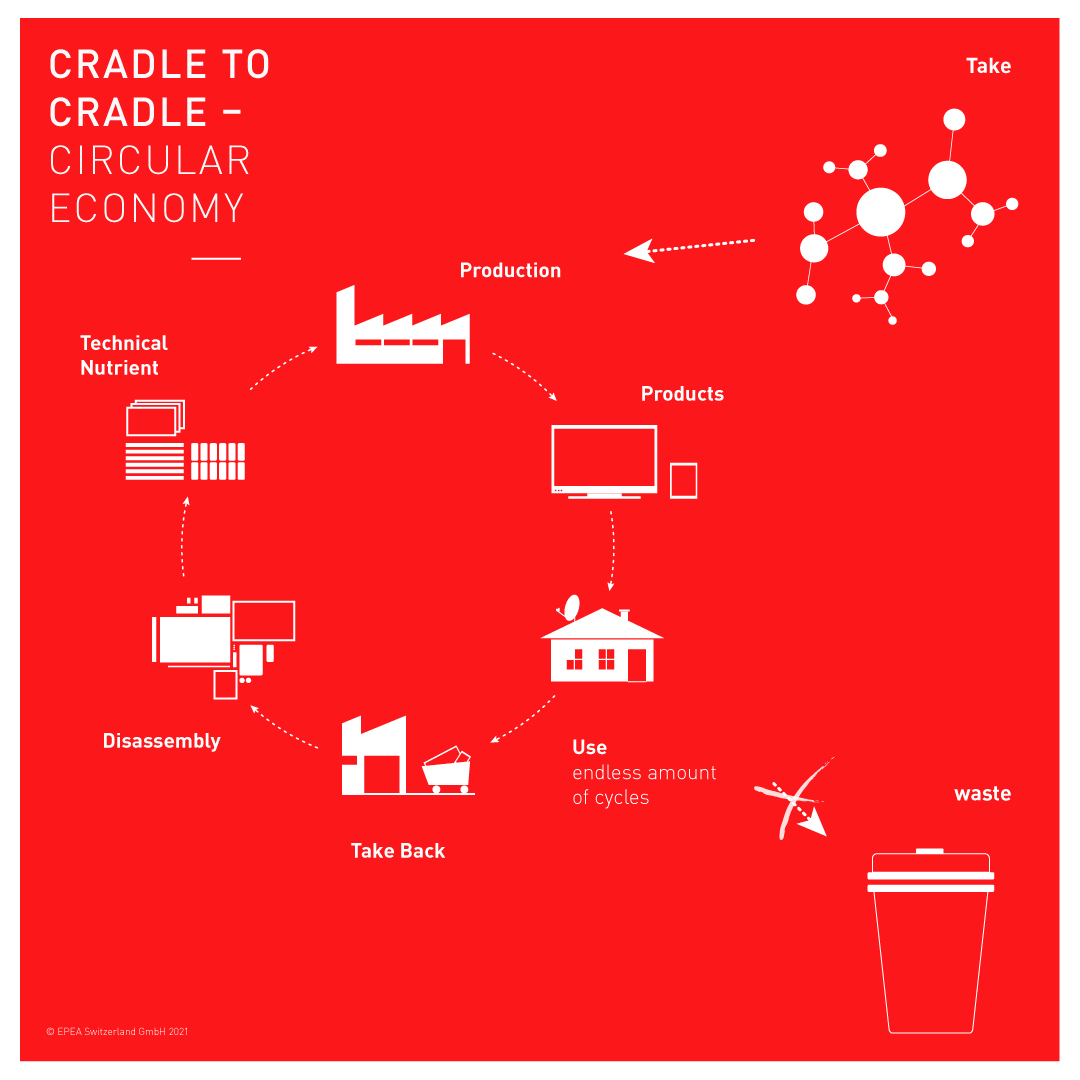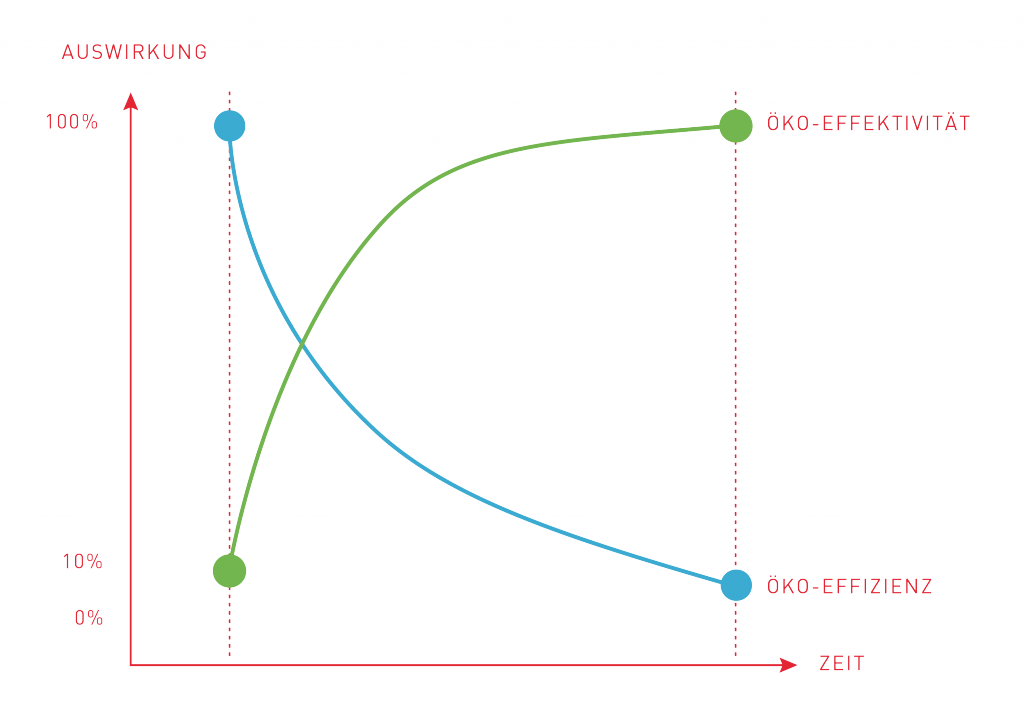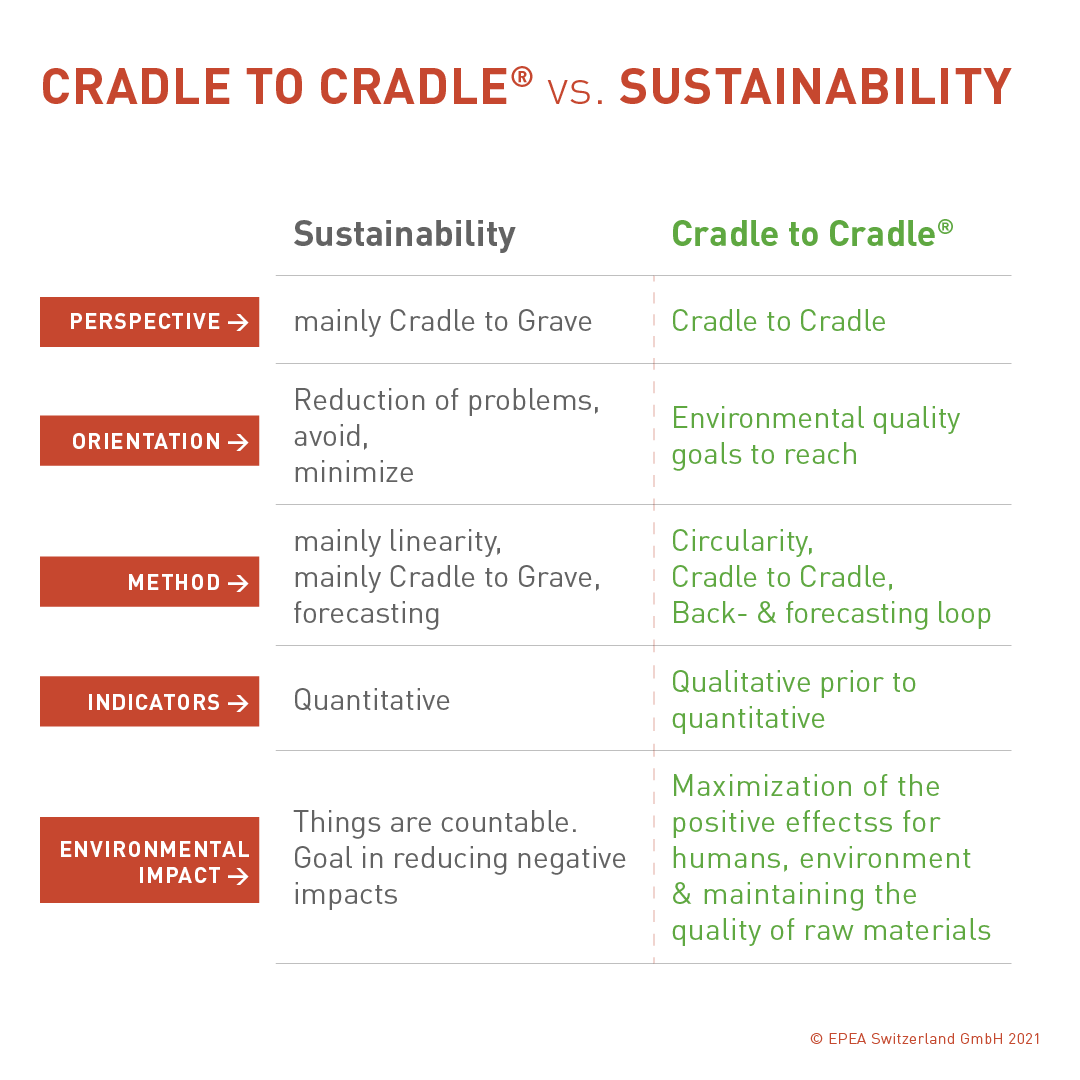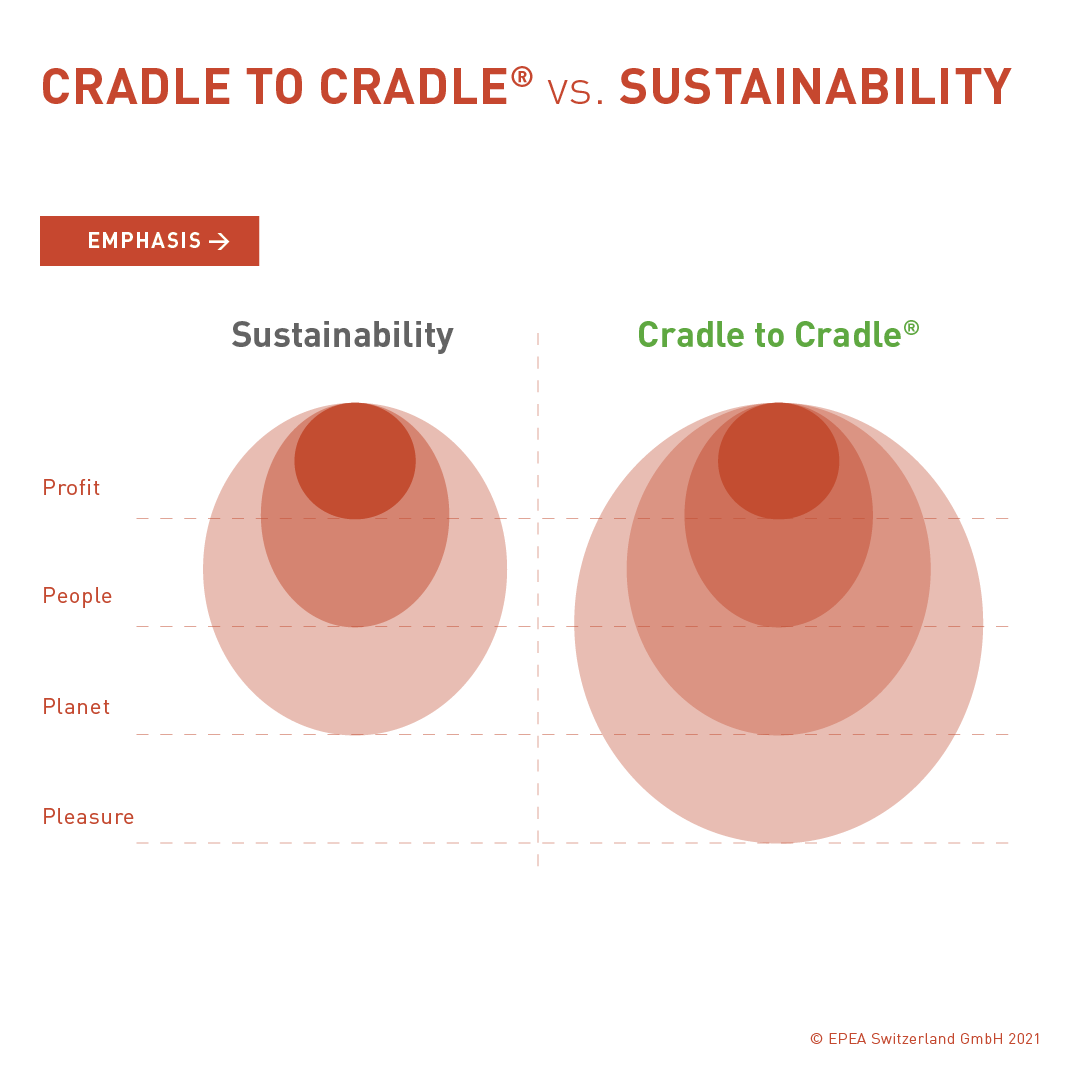The Idea
Cradle
to Cradle®
From cradle to cradle — rethinking production processes. Cradle to Cradle® Design defines and develops circular products. As a differentiation from conventional recycling, the quality of the raw materials is maintained over several product life cycles and only chemicals "rated as safe" are used.
The production processes, use and recycling of the products are designed according to the model of preserving the quality of the raw materials over several life cycles.
What exactly does that mean? No waste: all ingredients are considered as nutrients
— The right materials are integrated in defined cycles at the right time and place.
Quick Jump
Nature as a model
... reflects ongoing developments in a Cradle to Cradle product: Flourishing trees in spring are only apparently redundant.
The 2 Systems
The 2 systems: biological and technical cycles. Biological cycle: Consumer goods (natural fibres, cosmetics, detergents, etc.) are designed to be used again and again in biological cycles.
The 4th Dimension.
Cradle to Cradle Products reach a new quality dimension and distinguish themselves through high economic value as well as modest, ideally with no environmental damage.
Differentiation
Cradle to Cradle Design transmits the principle “Quality equal Quantity” to industrial systems. Materials together with material flows are
Topics Discussions
Cradle to Cradle requires a “Paradigm Change” in relation to today’s predominant “Cradle to Grave” approach.
Nature as a model
Nature as a model reflects ongoing developments in a Cradle to Cradle® product: Flourishing trees in spring are only apparently redundant. From a few blossoms new trees are growing. All blossoms not used for growth, fall to the ground and become nutrients.
Cradle to Cradle® Products reach a new quality dimension and distinguish themselves through high economic value as well as modest, ideally with no environmental damage. They achieve high consumer friendliness and are credentials of a paradigm change towards consumer behaviour and in the industrial production. Cradle to Cradle® Design defines not only form, functionality and ingredients of a product. The goal is to strive for a new dimension in quality and safety in endless cycles.

The 2 Systems: biological and technical cycles
BIOLOGICAL CYCLE
Consumer Goods (natural fibers, cosmetics, detergents, etc.) are designed so that they can be used in biological cycles over and over again. They decompose to organic nutrients and promote biological nutrients and systems such as plant growth. The renewable raw materials are in turn the basis for new products.
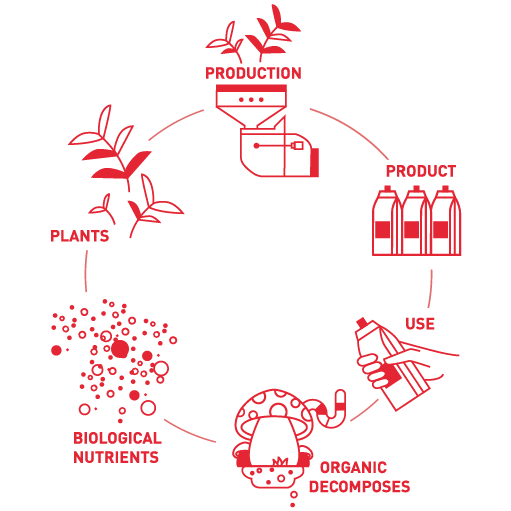
TECHNICAL CYCLE
Service Products (TV sets, cars, synthetic fibers, etc.), the so-called technical nutrients, are separated to enable the production of new commodities after fulfilling their initial function. The users / consumers purchase only the relevant services, e.g. Television. The materials remain the property of the manufacturer, which retains them through collection and reenters them into the technical cycle.
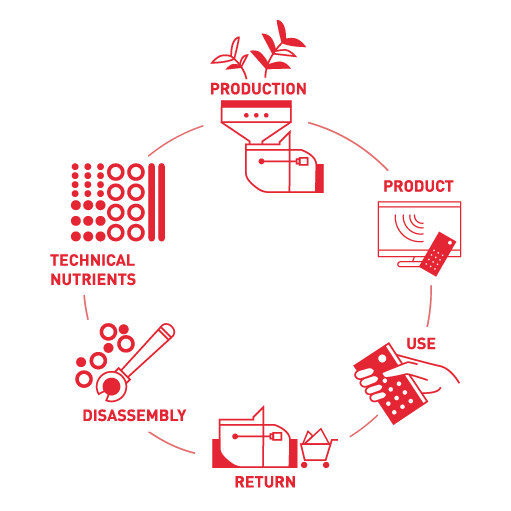
The 4. Dimension: From Linear to Cyclic Material Cycle
Product design is traditionally based on optimising functionality (technical and aesthetic performance) and manufacturing costs. Usually, three dimensions of a product are considered: height, length and width or performance, aesthetics, price. A product, however, is embedded in streams of material that move along a predetermined path that begins with “extraction”, goes through “manufacture” and ends with “discard” – with waste – as long as resources are not obtained as additional ones Feature of product quality is assumed.
Cradle to Cradle Design systematically integrates the production and distribution chain, “time” so to speak, as the fourth dimension of product quality. Materials are transformed and modified at various stages along these chains. A previously linear material flow is thus converted into a cyclical one. In this way, the value of all materials in biological or technical cycles is preserved.
Topics Discussion
| Cradle to Cradle® | Sustainability | |||
|---|---|---|---|---|
| Perspective | Cradle to Cradle | Mainly Cradle to Grave | ||
| Orientation | Environmental quality goals to reach | Problems to reduce, avoid, minimize, | ||
| Method | Circularity, Cradle to Cradle®, Back- and forecasting loop | Mainly linearity, mainly Cradle to Grave, forecasting | ||
| Indicators | Qualitative prior to quantitative | Quantitative | ||
| Environmental Impact | Maximization of the positive effectss for humans, environment and maintaining the quality of raw materials | Things are countable. Goal in reducing negative impacts | ||
| Emphasis | ✅ Profit ✅ People ✅ Planet ✅ Pleasure | ✅ Profit ✅ People ✅ Planet ❌ Pleasure | ||
